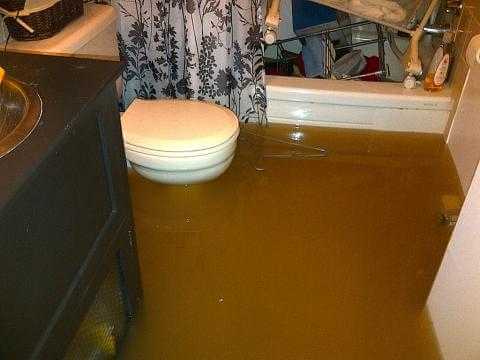Understanding Sewage Backup and the Cleanup and Restoration Process
by siteadmin

Sewage backup is a common and nasty problem that many homeowners face. It can happen suddenly and without warning, causing extensive damage to your property and posing a serious health risk to you and your family. If not addressed promptly, sewage backup can lead to costly repairs and restoration. In this article, we’ll discuss how sewage backup happens in your home and what steps you should take in the cleanup and restoration process.
How Sewage Backup Happens
Sewage backup happens when the wastewater from your home’s plumbing system overflows and doesn’t get flushed out of your property. This can occur due to a blockage in the pipes, a broken or collapsed sewer line, or a malfunctioning septic tank. When there is nowhere for the wastewater to go, it can come back up through your drains and toilets, causing a dangerous situation.
Signs of Sewage Backup
The first sign of sewage backup is usually a foul odor that pervades the house. You may also notice slow-draining sinks and toilets, along with gurgling sounds from the pipes. If you see sewage or wastewater backing up through your drains or toilets, it’s a clear indication of a serious problem that requires immediate attention.
Sewage Cleanup and Restoration Process
When sewage backup happens, it’s crucial to take action right away. Do not attempt to clean up the mess on your own, as you risk exposure to harmful bacteria and viruses that can cause serious health problems. Instead, call a professional sewage cleanup and restoration company. They will have the equipment, training, and experience to safely and effectively clean up the mess and prevent further damage.
The cleanup and restoration process will begin by extracting the wastewater, removing any contaminated materials, and disinfecting the affected areas. The professionals will use specialized equipment to dry out the affected areas and restore your property to its pre-loss condition. They will also work with your insurance company to help cover the costs of the cleanup and any repairs that are needed.
Preventing Sewage Backup
One of the best ways to prevent sewage backup is to have your plumbing system regularly inspected and maintained. Make sure that only human waste and toilet paper are flushed down your toilets, and avoid pouring grease, oil, and other harmful substances down your drains. Install backwater valves to prevent wastewater from flowing back into your property during heavy rainstorms.
Sewage backup is a serious problem that requires immediate attention. It can cause extensive damage to your property and pose a serious health risk to you and your family. By understanding how sewage backup happens and what steps to take in the cleanup and restoration process, you can protect your property and ensure your family’s safety and well-being. Remember to always call a professional sewage cleanup and restoration company for help and take steps to prevent sewage backup from happening in the first place.
Sewage backup cleanup pleasant grove
Sewage backup is a common and nasty problem that many homeowners face. It can happen suddenly and without warning, causing extensive damage to your property and posing a serious health risk to you and your family. If not addressed promptly, sewage backup can lead to costly repairs and restoration. In this article, we’ll discuss how…
Recent Posts
- Southwest Patio Elevates Outdoor Living with Exceptional Pergolas and Four Seasons Patio Covers in Phoenix, Arizona
- Expert Cleaners Lexington Shares Essential Tips for Properly Cleaning Hardwood Floors
- Exploring the Drawbacks of Duct Cleaning: Insights from Air Vent Cleaning Charlotte
- Exploring the Drawbacks of Duct Cleaning: Insights from Air Vent Cleaning Charlotte
- Clearing the Dust: Duct Cleaning Louisville KY Shares Tips to Make Your Home Less Dusty
